 The Coleco Adam? A not-so-great home computer that likely contributed to the downfall of the company. The keyboard, however, is a different story, and worth repurposing.
The Coleco Adam? A not-so-great home computer that likely contributed to the downfall of the company. The keyboard, however, is a different story, and worth repurposing.
[Nick Bild] has created a USB adapter that uses a Teensy 4.1 and an RJ-12 breakout board. Now this wasn’t just a simple matrix to decode. No, the fine folks at Coleco rolled their own communications protocol called AdamNet.
The keyboard uses an RJ-12 connector and a single data line to communicate over a 62.5 kbit/s, half-duplex serial bus. Inside the keyboard is a Motorola 6801 that caches the key presses and sends them to the computer. So the BOM is limited to what you see above — an RJ-12 breakout and a Teensy 4.1. It’s great to see old keyboards come alive again, especially one with such cool sci-fi keycaps. Want to hear it clack? Of course you do.
Typewriters vs. ADHD
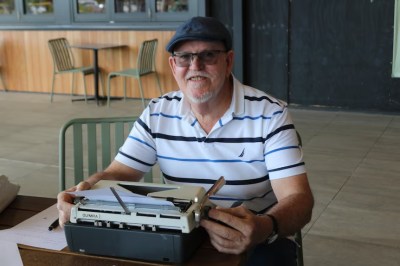
Do you know how long it took me to write Keebin’ this time around? Do you know how much faster it would have been if I’d typed it on a typewriter? Yeah. This is totally a thing. It seems typewriters are all the rage among Australian teenagers, especially those with ADHD.
This is according to Russell Watson, founder of Sunshine Coast Typewriters in Queensland, Australia, who has seen the resurgence firsthand. He believes it started with the Netflix Addams Family spin-off Wednesday.
He gave six typewriters to a teacher, who reported back that students with ADHD in particular were attracted to the clacking, the bell, and the permanence and in-hackability of a typed sheet of paper. Boy howdy!
Education expert Kathy Gibbs isn’t sure that the benefits are sustainable. The students may be hyperfocused on typewriters now, but once the novelty wears off, they’ll be back at the computer. I can tell you from experience that typewriting doesn’t get old, but YMMV. On the other hand, Gibbs believes that the students may end up reading more, thus becoming better writers.
The Centerfold: The Cyboard Dactyl Setup
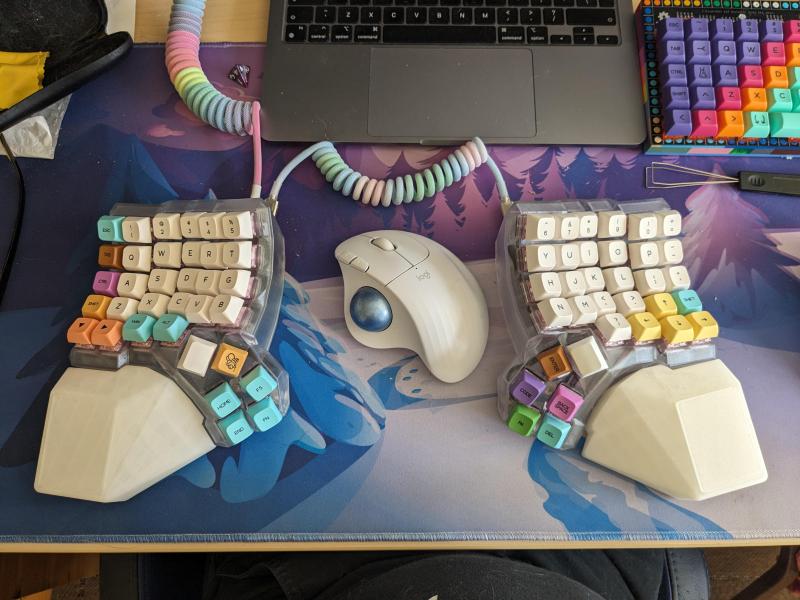
This is mostly here because of all the pretty colors, including the desk pad and that keyboard in the upper right. Also, I see you, purple D4.
Do you rock a sweet set of peripherals on a screamin’ desk pad? Send me a picture along with your handle and all the gory details, and you could be featured here!
Historical Clackers: The Dennis-Duplex Typewriter
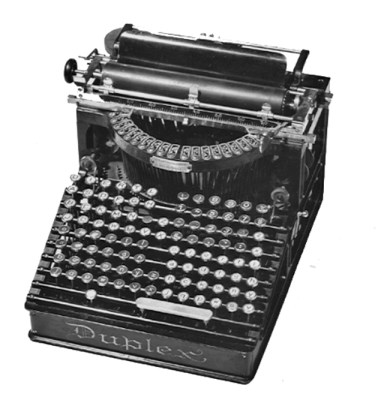
This 1895 specimen kind of looks like one of those AI-generated typewriter images I fooled around with a couple months ago — it has way too many keys. 100, to be exact, with a typebar for each one.
The type bars were arranged in two separate semi-circles, making it possible to type two characters at once. Just check out the layout. The effect is a kind of stenography feel. To type ‘hack’, you would press ‘h’ and ‘a’ at the same time, and then ‘c’ and ‘k’ together.
The Dennis-Duplex typewriter ad copy reasoned that if the experienced typist could type 100WPM on a standard machine, she could type 200WPM on a duplex. Sure.
Unfortunately, the Dennis-Duplex did not sell well. The Duplex 2 struck only one character at a time, and sold better.
ICYMI: Tile-Based Macropad Comes Full Circle
In case you missed a previous ICYMI, I covered [Michael Gardi]’s lovely tile-based macro pad, which keeps improving with each iteration.
In the picture, you can see the first version — the purple one — has tiles next to keys. More than just a label, each tile carries a magnet that interacts with Hall effect sensor to update the macro whenever a new tile is placed.
Well, [Michael] found himself hitting the tiles instead of the keys, so naturally, he had to try to integrate the two. The result is a cool 3D-printed custom switch situation that uses those lovely Futaba MDs. We heard that [Michael] is working on a custom PCBs for the buttons and the main board next to reduce the wiring and risk of breakage.
Got a hot tip that has like, anything to do with keyboards? Help me out by sending in a link or two. Don’t want all the Hackaday scribes to see it? Feel free to email me directly.

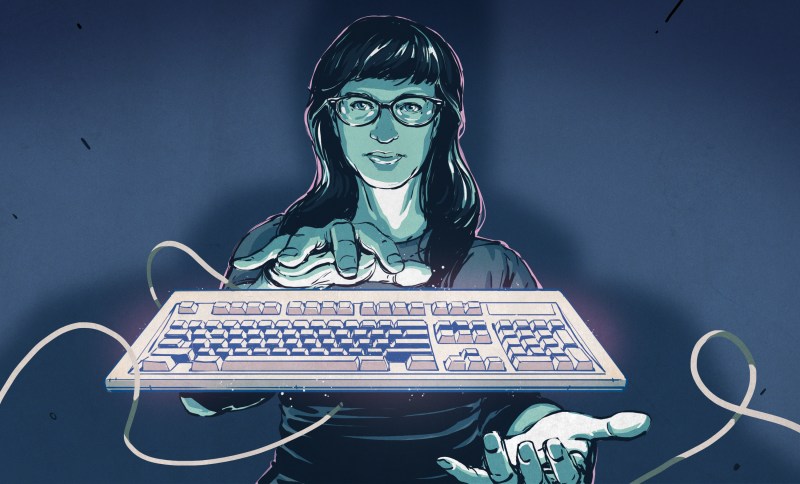
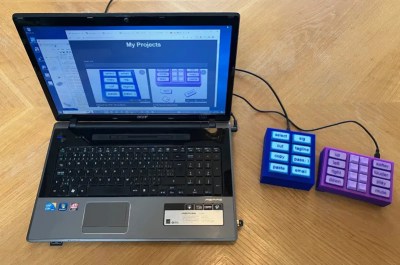













“To type ‘hack’, you would press ‘h’ and ‘a’ at the same time, and then ‘c’ and ‘k’ together.”
How would it know to type hack instead of ahkc?
The keyboard seems to have two nearly identical halves. The same keys (and letters) exit for left and right hands.
You type left hand “h” and right hand “a” simultaneously, then left hand “c” and right hand “k” simultaneously.
Look at the character space as holding two characters. |L|R| The L space can only be filled by a left hand keyboard character and the R space can only be filled by a right hand character.
A normal typwriter would only have a single character space |C| that is filled by which ever key you strike.
Spaces at the end of a word would be fun. Depending on how the word ends, you’d have to either put a space at the end with your right hand |L| | or put a space at the beginning of the next word | |L|. The same thing happens with punctuation marks. Wheee! Loads of fun.
I don’t think it is surprising that the Duplex didn’t sell well.
That’s what they needed to use on NCIS!
B^)
The Coleco Adam wasn’t a bad computer. It was overly ambitious for the technology of the day and quality issues made reliable units late to market. Adam was the only machine of its day to boot to a word cruncher instead of a programming language, and the entire package with a daisy wheel printer included was half the cost of the cheapest daisy wheel printer you could find elsewhere. (This was in a day when many editors were telling prospective writers not to send them dot matrix printouts.) Had Coleco gotten it to market when they wanted they would probably have put quite a dent in the market for IBM PC’s, which were ridiculously overpriced even compared to a practically equipped Apple, Commodore, or Radio Shack system. And one of the best simplest hacks was to just order a 12 foot RJ-12 cable from Digi-Key. Then you could recline on your sofa and use the computer in comfort with your TV set as the monitor.
AIUI, the main problem was the data tapes getting corrupted by the deguassing coil of the TV.
Oh, and Coleco had fistfulls of money from their popular Cabbage Patch Dolls.
They used a tape drive that they called a wafer tape drive (it was really a somewhat modified audio cassette, although they were trying to invoke mainframe tape drives as a comparison )as primary storage. The problem is that 1983 was after Apple and Commodore had put floppy drives in the reach of home computers. The Adam was released as a tape-based system in a disk-based world (and random access was becoming really important). If they’d gotten it to market a year or two earlier, the tape drive would have been less of a drawback.
The Adam tape drive was random-access. It had a file system and fully automatic bidirectional multi-speed seek and read-write operation. The biggest problem with it was that if you left a tape in the drive while turning the unit on or off it could permanently damage the tape due to a power glitch. It was also slow of course, but not that slow compared to the infamous C64 serially interfaced 1541 disk drive. There was a disc drive available for the Adam too, although it wasn’t introduced until very late.
The Adam tape drive was a pretty advanced concept if you’d ask me.
The fact that a tape could forward and reverse automatically combined with reading and writing at decent speeds without the user pressing a single play/record/forward/reverse button is mind boggling. Keep in mind that I’m looking at it from the perspective of a C64 user with a 1530 datasette (which was my first setup 35 years ago).
Looking at the mechanics of the coleco adam tape drive, it isn’t that complex at all. Although the electronics are a bit more complex though. A few months ago I’ve learned about this device and I’m pondering if I can remake the concept for a C64, just for the fun of it. With a modern microcontroller, the guts from an old 1530 datasette a 4 track tapehead from alibay and some simple tape signal amplifiers it must be doable… but don’t expect to see it here on hackaday soon. Lot’s of work to be done, lot’s of other projects to be finished first.
“Logitech Ergo M575 mouse”
Kristina, come on, now. Mouse? Or is that what the cool kids are calling them these days?
Anyway, got me thinking about how many of those, um, peripherals I have rolled through over the years See what I did there? At least 10? I think I might even have them all stashed away in various places. I just might have to try digging them up in order to have an accurate tally.